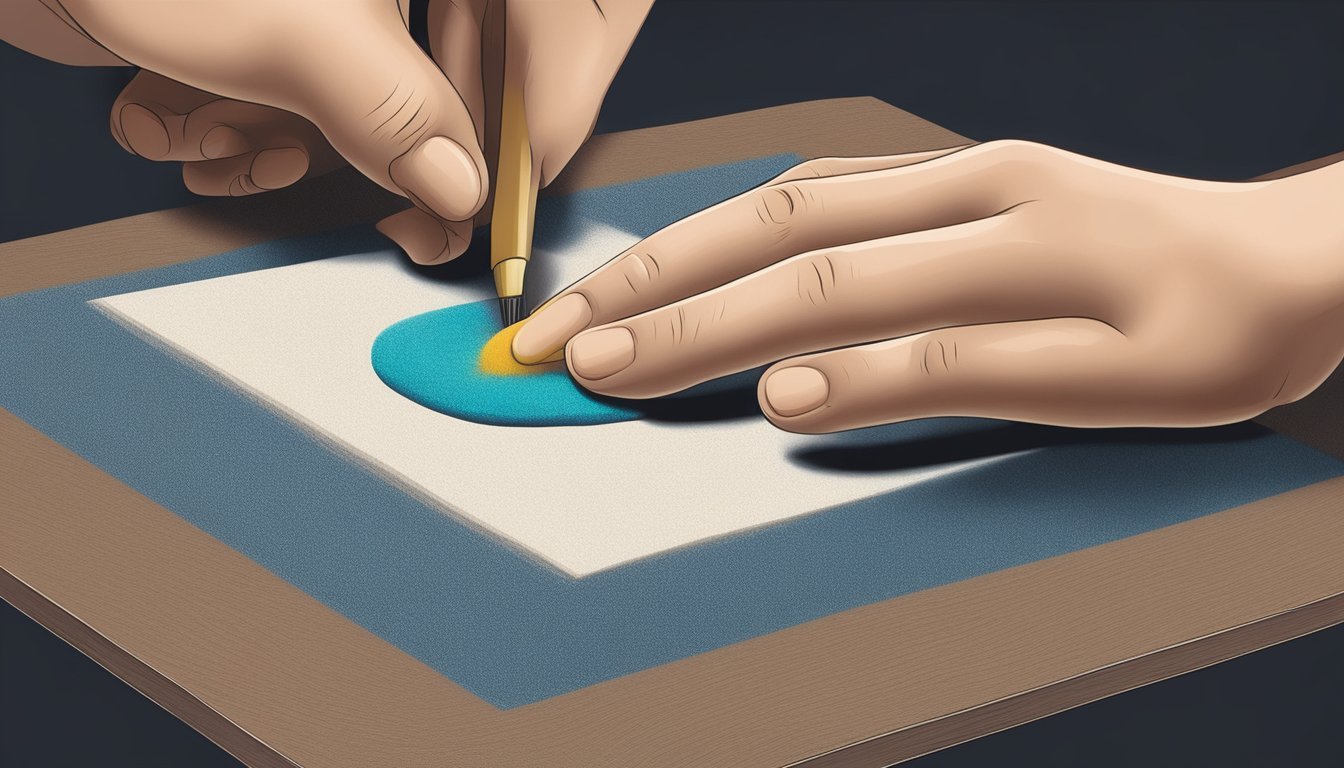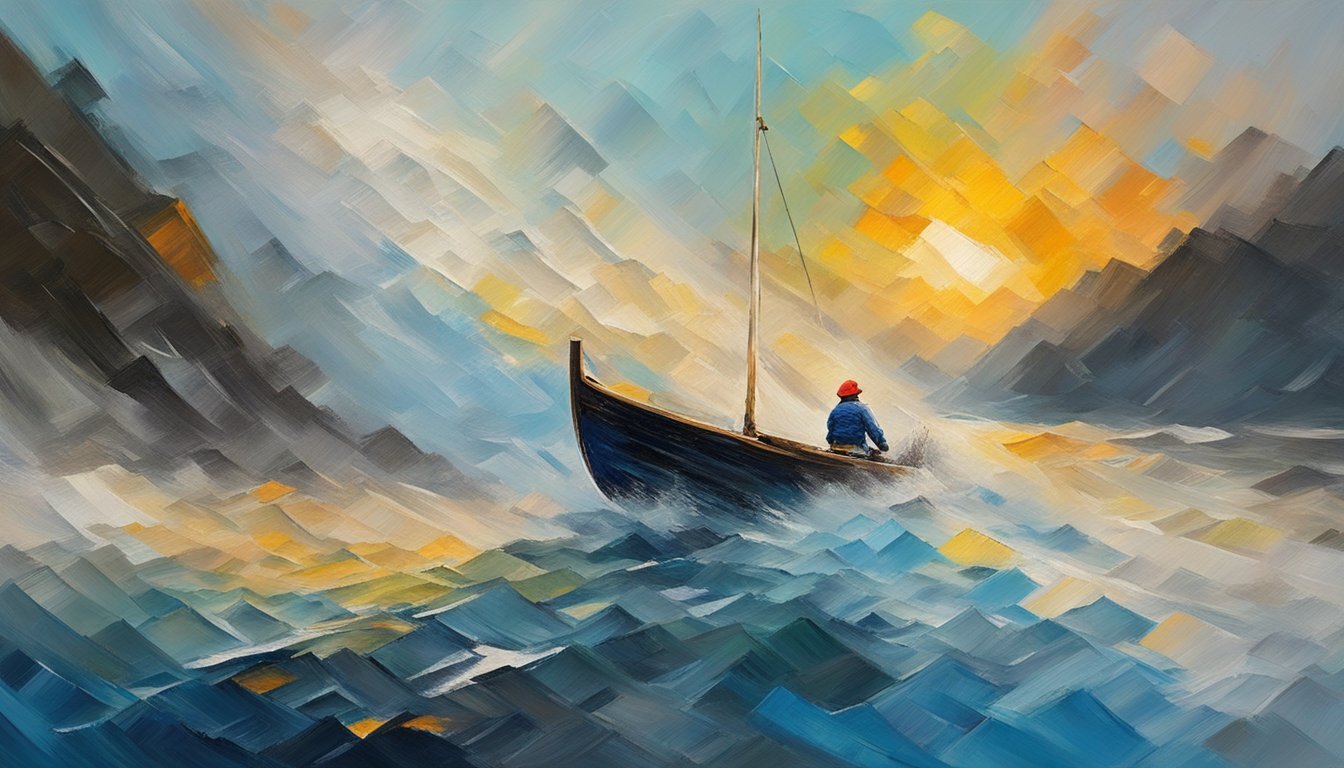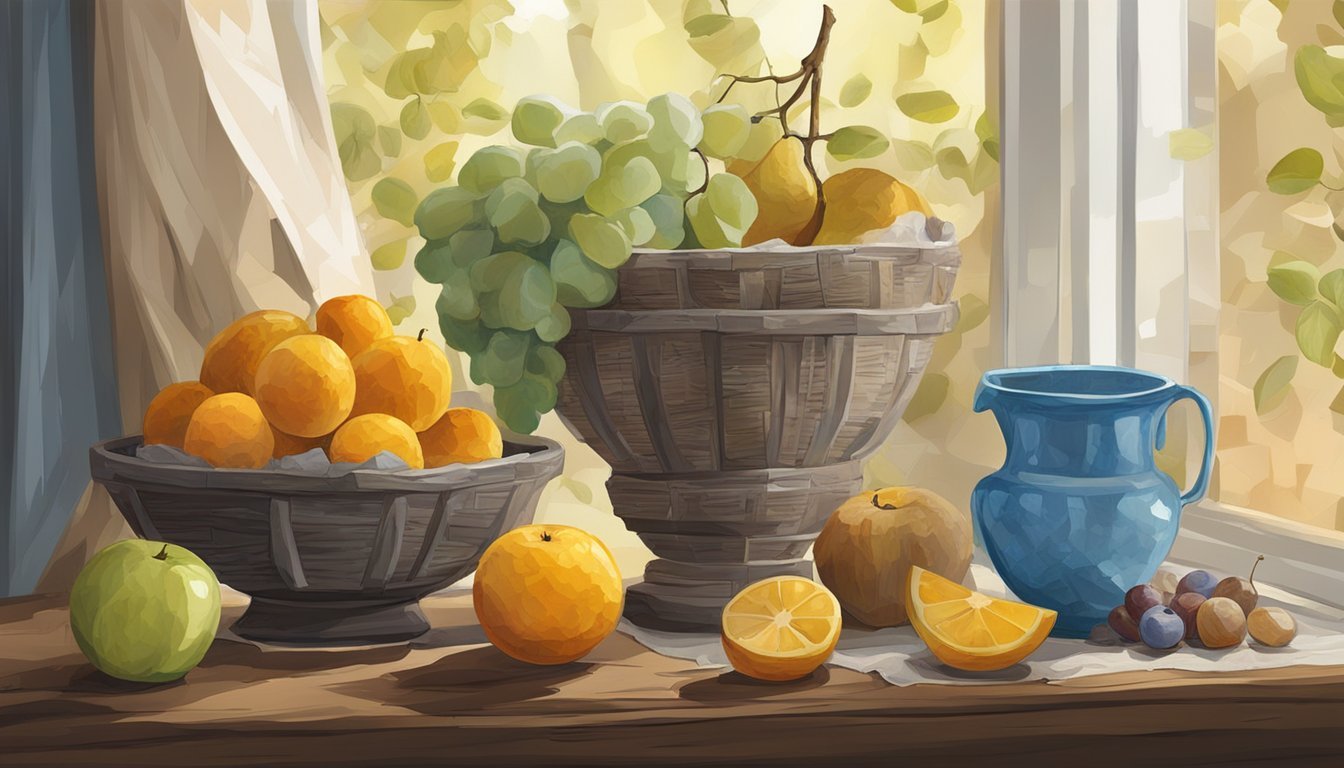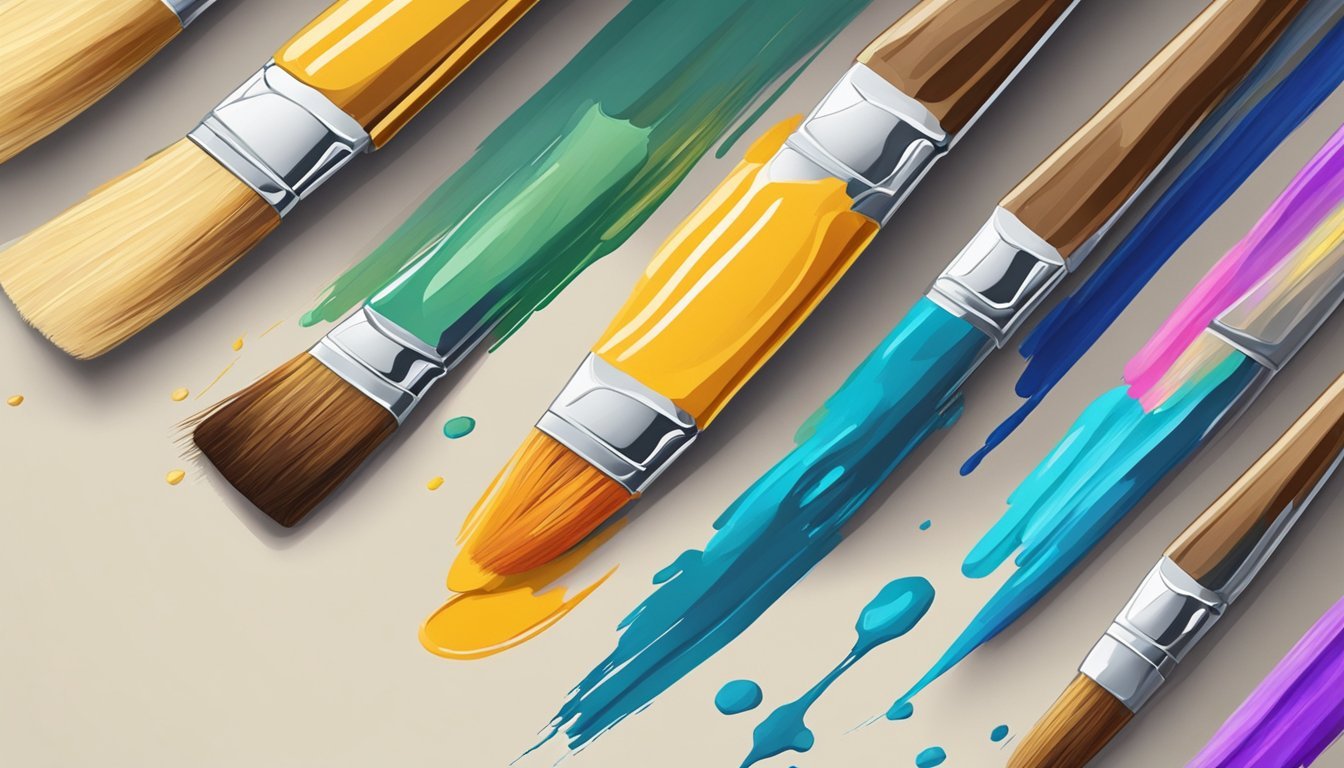Adding texture to your drawings and paintings can transform flat images into dynamic works of art. Incorporating different techniques enhances your artwork’s depth and appeal, making it more engaging for viewers. Whether you’re working with traditional mediums like pencils and paint or experimenting with mixed media, there are countless ways to infuse texture into your creative projects.

Texture not only adds visual interest but also evokes emotional responses from your audience.
By mastering different methods to create texture, you can elevate your artistic skills and bring your ideas to life in fresh and exciting ways.
This article will explore seven effective techniques to help you enhance your artwork and express your unique style.
1) Cross-hatching
Cross-hatching is a simple yet effective technique for adding texture to your drawings.
It involves drawing multiple sets of parallel lines that intersect.
You can create depth by varying the density of these lines.
Using closer lines can give you darker areas, while wider spaces produce lighter tones.
Try to follow the contours of the objects you’re drawing.
This approach makes your work feel more dynamic and lifelike.
Experiment with different angles of your hatch marks.
Consistency in the direction helps maintain a cohesive look, but don’t be afraid to mix it up for interest.
You can use cross-hatching with various media, such as pencil, ink, or charcoal.
Just grab your preferred tool and start layering those lines.
With a little practice, you’ll find that cross-hatching can really elevate the texture and dimension in your art.
Stippling
Stippling is a fun technique to add texture and depth to your artwork.
Instead of using lines, you create your image using small dots.
This method works well with various mediums like ink, pencils, or digital tools.
As you get started, lightly sketch the outline of your subject.
Then, pick your stippling tool and begin placing dots within the outline.
The closer your dots are, the darker the area will appear.
Don’t be afraid to vary the size of your dots.
Larger dots can provide bold highlights, while smaller ones can fill in fine details.
This variation creates interesting texture in your work.
Practice is key.
Focus on maintaining control for consistent dot placement.
A steady hand will help you achieve the desired effect over time.
Stippling can transform a simple drawing into something truly unique.
It’s a simple way to experiment and have fun while adding layers to your art.
Give it a try and see the difference it makes!
Sgraffito
Sgraffito is a fun technique that adds interesting texture to your drawings and paintings.
The word itself comes from Italian, meaning “to scratch.” It involves scratching through layers of paint to reveal what’s underneath.
To get started, prepare your surface well.
Make sure it’s clean and primed for the best results.
Apply a base layer of paint and let it dry a bit.
While it’s still wet, use a tool to scratch your design into the surface.
You can get creative with your patterns.
Practice your designs on paper first to figure out what shapes you want to incorporate.
Different tools can create various line qualities, so experiment to find what works best for your style.
Sgraffito is particularly effective with thick applications of paint, like in impasto work.
It gives depth and contrast to your artwork.
Plus, it can be a great way to incorporate multiple colors, making your piece visually intriguing.
Give it a try and see how it enhances your creations!
4) Dry Brushing
Dry brushing is a fun technique to add texture and depth to your artwork.
It involves using a brush that has minimal paint on it, which creates a unique, textured effect.
You can use dry brushing with various mediums, including acrylics and oils.
Make sure your canvas is dry before you start.
This method works great for detailing elements like fur or grass.
To achieve the best results, control the moisture level on your brush.
It should be damp, not wet.
Choose rough watercolor paper for added texture, which enhances the dry brush effect.
Feel free to experiment with different brush sizes and pressure.
Each combination can produce a variety of textures, keeping your work dynamic and interesting.
Try it out in small areas first to see how it works for you.
Once you’re comfortable, you can incorporate dry brushing into larger sections of your piece.
This approach can truly elevate your drawings and paintings.
5) Impasto Technique

The impasto technique is all about adding texture to your artwork.
It involves applying thick layers of paint, allowing you to build a three-dimensional effect that can really make your artwork pop.
To start, use a stiff brush or a palette knife.
This allows the paint to maintain its shape as you apply it.
Using paint straight from the tube can enhance the effect, giving your piece a lively and energetic feel.
When working on different areas, paint the lighter colors first.
This sets a foundation for darker tones and shadows, creating depth in your painting.
Allow each layer to dry slightly to achieve a vibrant and textured finish.
Another tip is to experiment with different strokes.
A dry brush technique can add subtle highlights and shadows, enhancing the texture you’ve already created.
Impasto works well with both oil and acrylic paints.
The choice of medium will impact the texture, so feel free to experiment with what you have on hand.
With a little practice, you’ll be able to achieve stunning textures that draw viewers in.
6) Rubbing with Sandpaper

Using sandpaper can add unique textures to your drawings or paintings.
It’s a simple technique that yields interesting results.
Start by choosing a piece of sandpaper with a suitable grit for your work.
Coarser paper creates more pronounced textures, while finer grit can give subtler effects.
Place the sandpaper beneath your drawing or painted surface.
Rub your art tool, like a crayon or pencil, over the sandpaper.
This action transfers the texture onto your medium.
You can experiment with different pressures.
Light pressure will give a soft imprint, while pressing harder will enhance the contrast and visibility of the texture.
This technique works well with various mediums, including watercolor and acrylics.
Just make sure your base layer is dry before you begin rubbing.
Overall, it’s an enjoyable way to add depth and interest to your artwork.
Enjoy the tactile experience and let your creativity flow with this technique!
7) Using a Palette Knife

Using a palette knife can really transform your artwork.
It’s not just for mixing paint; it can add incredible texture and depth to your pieces.
To start, choose a knife that fits your desired effect.
A wider blade is great for broad strokes, while a narrower one is better for detailed work.
Load the edge of the knife with paint and apply it at an angle for a smooth application.
You can create various textures by scraping, dabbing, or dragging the knife across the canvas.
This technique works well with thick paint, allowing you to build layers and create a three-dimensional effect.
Experiment with different pressures and angles.
You might find that using the knife’s tip or side yields interesting results.
Adding highlights or accents with a palette knife can really make certain areas pop.
Don’t forget to clean your knife between colors to keep your palette fresh.
This flexibility lets you mix and blend while you work, giving your piece a dynamic feel.
Enjoy the process and let your creativity flow!
Understanding Texture in Art

Texture adds dimension and interest to your artwork, transforming flat surfaces into engaging, tactile experiences.
Grasping its essence can enhance your creative expression, whether you’re drawing or painting.
What Is Texture?
Texture refers to the surface quality of a work of art.
It can be visual, where it appears to have a certain feel, or tactile, where it actually can be felt.
In drawing, for instance, you might create texture using specific techniques like cross-hatching or stippling.
In painting, texture can be achieved through layering paint, adding materials like sand, or using unconventional tools like sponges or palette knives.
Different mediums contribute to texture in unique ways.
For example, oil paints offer a buttery consistency, while acrylics dry quickly and can be manipulated into various forms.
Understanding these distinctions helps you decide how to best create texture in your pieces.
How Texture Influences Your Work
Texture plays a crucial role in guiding your audience’s response to art.
It provides depth and dimension, making your pieces feel more dynamic.
Consider how texture can lead the eye across your work.
A smooth area can contrast sharply with a rough one, creating focal points and enhancing visual interest.
Texture can also evoke emotions.
For example, soft, flowing textures might give a sense of calm, while jagged, harsh textures can convey tension or chaos.
By consciously implementing texture, you can evoke intended feelings and reactions from viewers, making your art more compelling and impactful.
Tips for Enhancing Texture

To make your drawings and paintings come alive with texture, focus on the tools you use and how you layer your materials.
These techniques can significantly impact the visual appearance of your work.
Experimenting with Different Art Tools
Your choice of tools can greatly affect the texture in your art.
Don’t hesitate to try a variety of instruments.
Pencils, brushes, palette knives, and even your fingers can produce distinct effects.
-
Graphite and Charcoal: Use different grades for a range of textures, from smooth to grainy.
-
Brush Types: A flat brush can create broad strokes, while a round brush offers precision.
-
Palette Knives: These can add dimension by scraping paint or applying it in thick layers.
Mixing mediums like ink and watercolor can also create stunning textures.
Remember to play around—what works for one piece might not work for another.
Layering Techniques for Depth
Layering is key to producing rich textures in your artwork.
You should start with a base layer and build up.
Allow each layer to dry before adding more.
-
Base Layer: This can be a monochromatic wash or a soft gradient.
-
Add Texture: Use techniques like stippling or cross-hatching for shading.
-
Contrast: You can build contrast by alternating between light and dark layers.
-
Final Details: Add highlights or fine lines on top for a polished look.
Applying these methods thoughtfully can give your work a striking depth and dimensionality.
This will capture interest and engage viewers.


